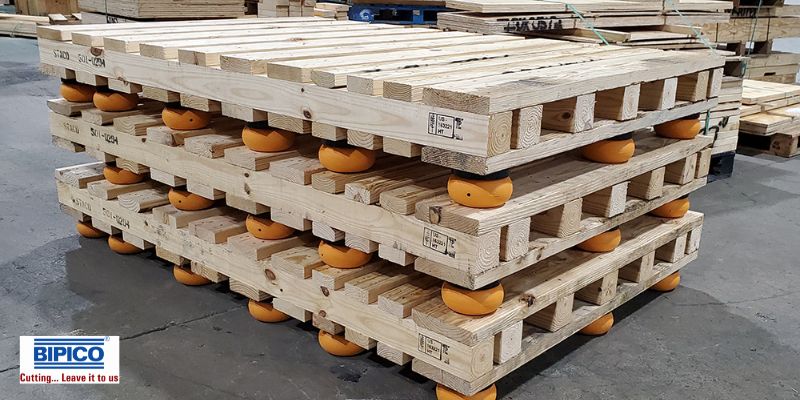Streamlining Pallet Cutting Processes for Sustainable Manufacturing
In today's fast-paced manufacturing industry, efficiency and sustainability are crucial factors that can significantly impact the success of a business. One area where companies can make a substantial difference is in their pallet-cutting processes. By streamlining these processes, manufacturers can improve their overall productivity and contribute to a more sustainable future. This article will delve into the various aspects of pallet cutting and provide insights into optimizing this essential operation for sustainable manufacturing practices.
Understanding Pallet Cutting
What Are Pallets?
Pallets are flat structures used to support goods during storage and transportation. They provide stability, ease of handling, and protection for their products. Pallets are typically made from wood, plastic, or metal and come in various shapes and sizes.
The Importance of Pallet Cutting
Pallet cutting refers to transforming raw materials into pallet components, such as deck boards, stringers, and blocks. It is a crucial step in the pallet manufacturing process, as the cut components' quality directly affects the pallets' strength, durability, and overall performance.
Enhancing Efficiency in Pallet Cutting
Efficiency plays a significant role in the success of any manufacturing process. Regarding pallet cutting, optimizing efficiency can lead to reduced costs, increased production output, and improved overall quality. Here are some key strategies to enhance efficiency in pallet cutting:
Advanced Machinery and Automation
Investing in advanced cutting machines and automation systems can revolutionize pallet-cutting operations. Computer Numerical Control (CNC) machines equipped with laser-guided cutting technology can precisely and quickly cut pallet components according to predefined specifications. Automation eliminates human error, minimizes waste, and enhances accuracy, resulting in higher-quality pallet components.
Real-Time Data Monitoring
Implementing real-time data monitoring systems allows manufacturers to monitor pallet-cutting processes closely. By collecting and analyzing data such as cutting speed, blade performance, and material utilization, companies can identify areas for improvement and make data-driven decisions to optimize their operations. This data-driven approach ensures continuous process improvement and maximizes efficiency.
Material Optimization Techniques
Efficient material usage is a crucial aspect of sustainable manufacturing. Employing material optimization techniques in pallet cutting helps minimize waste and reduce environmental impact. By carefully analyzing cutting patterns, material thickness, and component dimensions, manufacturers can optimize material utilization, thereby reducing waste and saving costs.
Embracing Sustainable Practices
Sustainability has become a top priority for businesses worldwide. By adopting sustainable practices in pallet-cutting processes, manufacturers can significantly reduce their carbon footprint and enhance their brand reputation. Here are some sustainable strategies to consider:
Material Selection
Choosing sustainable and eco-friendly materials for pallet production is the first step towards sustainable pallet cutting. Opting for responsibly sourced wood, recycled plastic, or alternative materials like bamboo can significantly reduce the environmental impact. These materials should be selected based on their strength, durability, and ability to be efficiently cut and assembled.
Recycling and Waste Management
Implementing a comprehensive recycling and waste management program is crucial for sustainable manufacturing. Manufacturers can establish partnerships with recycling facilities to ensure proper disposal of waste materials. Additionally, exploring opportunities for upcycling or repurposing waste components can minimize environmental impact and create additional value.
Energy Efficiency
Reducing energy consumption is another important aspect of sustainable pallet cutting. Manufacturers can invest in energy-efficient machinery, utilize intelligent power management systems, and implement energy-saving practices such as optimizing cutting speeds and reducing idle time. These measures reduce carbon emissions and result in long-term cost savings.
Conclusion
Streamlining pallet-cutting processes is an integral part of sustainable manufacturing. By embracing efficiency-enhancing strategies and sustainable practices, manufacturers can optimize their operations while minimizing waste and environmental impact. Investing in advanced machinery, utilizing real-time data monitoring, and implementing material optimization techniques all contribute to achieving high-quality pallet components. Furthermore, businesses can pave the way for a greener future by selecting eco-friendly materials, implementing recycling programs, and focusing on energy efficiency. Through these initiatives, manufacturers can position themselves as leaders in the industry, delivering high-quality pallets while prioritizing sustainability and staying ahead of the competition.




Comments
Post a Comment